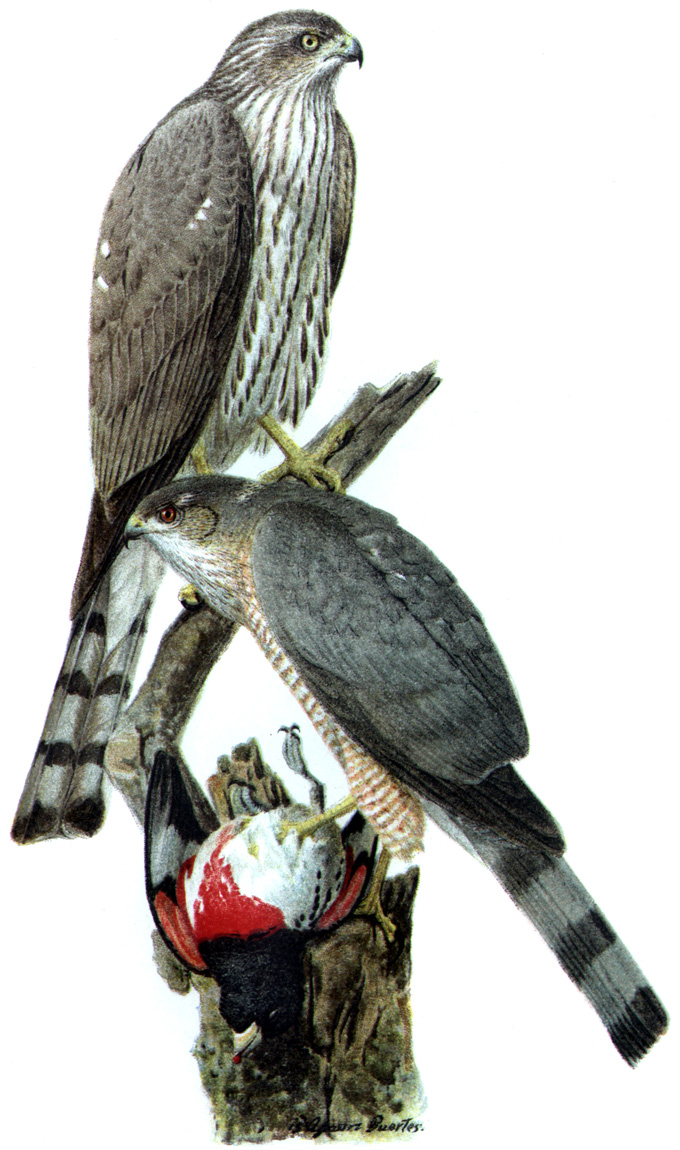Hawk (Order: Falconiformes) - Wiki Hawk
From Wikipedia, the free encyclopedia
Order: Falconiformes
Family: Accipitridae Pandionidae
[Photo] Sharp-shinned Hawk (Accipiter striatus) chromolithograph. Source United States Department of Agriculture Yearbook. Date 1908. Author Louis Agassiz Fuertes (artist, 1874-1927).
The term hawk refers to birds of prey in any of three senses:
In strict use in Europe and Asia, to mean any of the species in the subfamily Accipitrinae in the genera Accipiter, Micronisus, Melierax, Urotriorchis and Megatriorchis. The large and widespread Accipiter includes goshawks, sparrowhawks , the Sharp-shinned Hawk and others. These are mainly woodland birds with long tails and high visual acuity, hunting by sudden dashes from a concealed perch.
More generally (especially in North America) to mean small to medium-sized members of the Pandionidae (the Osprey) and the Accipitridae - the family which includes the "true hawks" (Accipiters) as well as eagles, kites, harriers, Buzzard and Old World vultures.
Loosely, to mean almost any bird of prey outside of the order Strigiformes (owls).
The common names of birds in various parts of the world often use hawk in the second sense. For example, the Osprey or "fish hawk"; or, in North America, the various Buteo species (e.g., the Red-tailed Hawk, Buteo jamaicensis).
In February 2005, Canadian ornithologist Louis Lefebvre announced a method of measuring avian "IQ" in terms of their innovation in feeding habits. Hawks were named among the most intelligent birds based on his scale.
Hawks are widely reputed to have visual acuity several times that of a normal human being. This is due to the many photoreceptors in the retina (up to 1,000,000 per square mm for Buteo, against 200,000 for humans), an exceptional number of nerves connecting these receptors to the brain, and an indented fovea, which magnifies the central portion of the visual field.
http://en.wikipedia.org/wiki/Hawk
| The text in this page is based on the copyrighted Wikipedia article shown in above URL. It is used under the GNU Free Documentation License. You may redistribute it, verbatim or modified, providing that you comply with the terms of the GFDL. |
